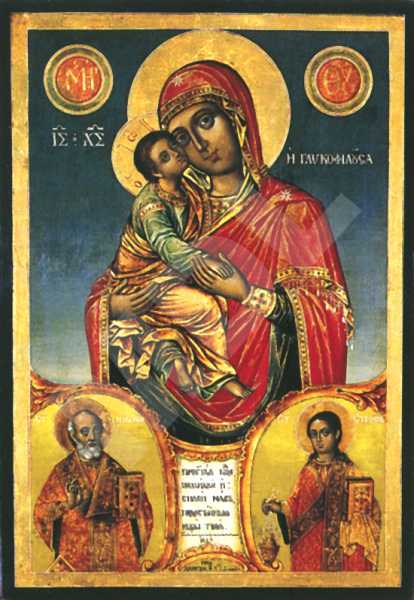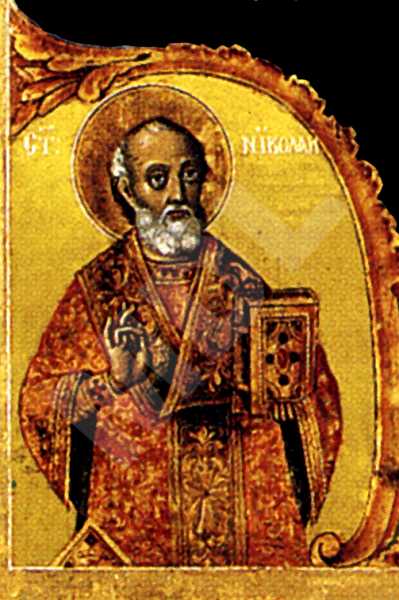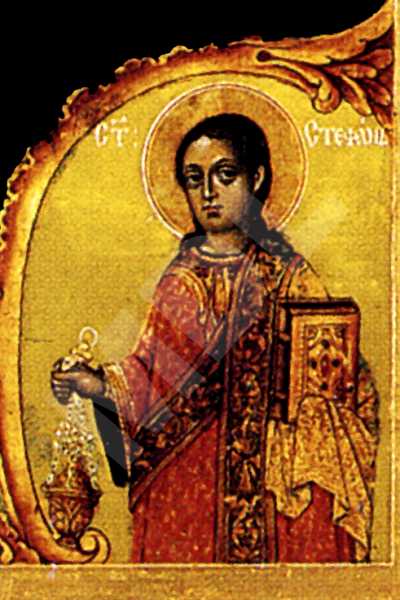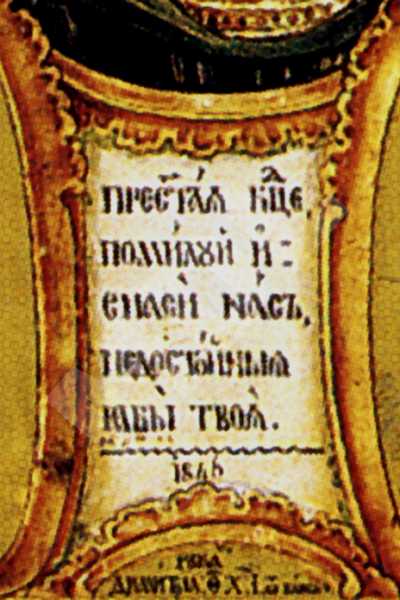The Virgin of Tenderness (Glycophilousa)
Type:
Icon
Period:
1846 year
Dimiter T. Molerov, born in 1780 in Bansko, son of Toma Vishanov the Moler. One of the best-known painters, a representative of the Bansko school of art, a disciple of his father, influenced by the art of Athos. Author of the murals of the naos in the St Archangels' paraclete in the Rila monastery, the murals in the Church of the Assumption of the Virgin in the Pchelino dependance. In 1840 and 1841 together with his son Simeon Molerov he paints the murals and the sponsors' portraits in St. Nicholas' and St. John of Rila's paracletes in the principal church in the Rila monastery. Among D. Molerov's major achievements in iconography are the following icons: St. Nicholas (1816) from St. Archangel Michael's church in the village of Leshko, Christ All-triumphant with Angels and Cherubim (1833), The Nativity and a Crucifixion from St Elijah the Prophet's church in the village of Usenovo. He has also worked in Belgrade on an invitation by Prince Milosh Obrenovich of Serbia. He died in 1870 in Bansko.
Dimmensions (cm):
43
/ 30
/ 2.2
Location
Country: Bulgaria
Province: Blagoevgrad
Town: Gotse Delchev
Church: The Virgin
Source
Country: Bulgaria
Province: Blagoevgrad
Town: Gotse Delchev
Church: The Virgin
Description
The Holy Mother of God and the young Christ take up two thirds of the icon's surface. Painted to their waists in two lower corners are the images of St. Nicholas and St. Stephen in relatively large medallions.St. Nicholas is blessing with his right hand and St. Stephan is holding a censer. They are depicted in big medallions shouldered with baroques ornaments and floral motifs.
Iconographical technique: Combined
Distemper painting with an increased amount of oil as the vehicle, combined with "probaster", engraved gold, liquid gold and velaturas. The line-work of the headcloth of the Holy Mother of God is executed with liquid gold, the rim is gilded with gold-leaf. The mantle of the young Christ is gilded with gold-leaf and modelled with velaturas. The faces of the figures are finely modelled by means of the "wet into wet" technique and are remarkable for their distinct tactile value.
Base material: Wood
The base is a softwood panel, strengthened by two inserted beams.
State, restoration traces and comments
The icon had been largely damaged and had subsequently been restored. A part of the left medallion with the initials of the Holy Mother of God had been destroyed. That part had been puttied and roughly retouched. Similar restorations of smaller sizes may be seen all over the icon's surface. There are considerable damages on the velaturas. The dark-brown outer frame has been entirely overpainted. The uncovering had showed that the original frame had been black with a greenish hue. The name of the Holy Mother of God is inscribed on the background on both sides of her head and is entirely effaced as the result of a greatly darkened varnish cover. For that reason it had initially been registered as "Holy Mother of God". After a cleaning an inscription appeared showing the name of the icon: The Virgin Glycophilousa (Tenderness). There is in the space between the Virgin and the two saints another inscription and the year 1846.




